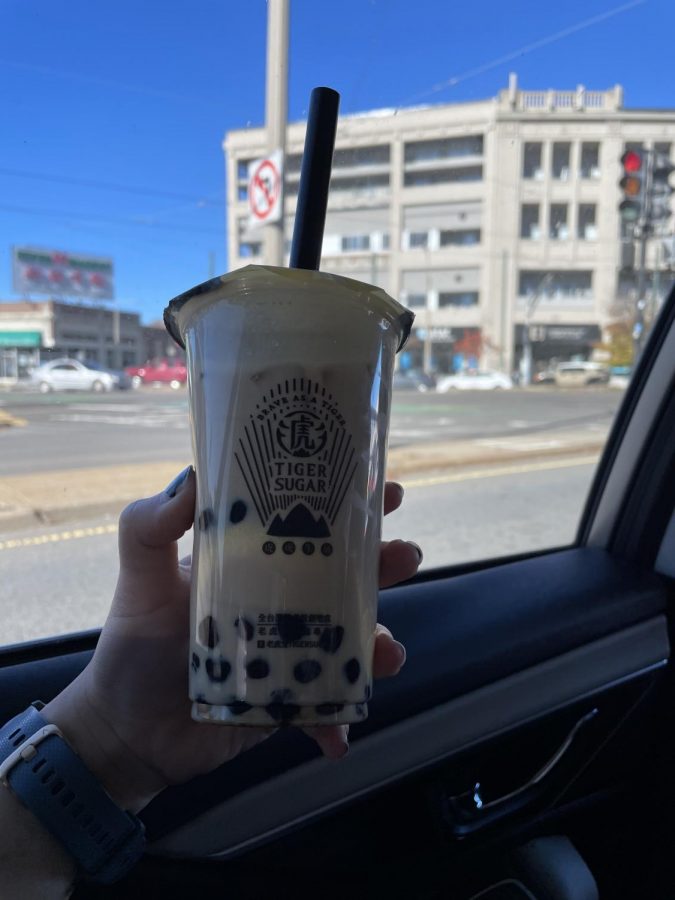Bubbling over: The rise of bubble tea
Photo by Isabella Kofsky
Tea was first invented in 2737 B.C.E. People started drinking tea with sugar in the 17th century. Iced tea was popularized in 1904. Bubble tea, one of the newest innovations, invented in the 1980s, has begun a meteoric ascension in the caffeinated drink market.
But what is bubble tea? In short, bubble tea is a cold drink made from tea, milk, sweeteners and tapioca pearls. There are many combinations that someone can make with various types/kinds of tea, sweeteners, flavorings and additional toppings like fruit jellies. However, the most common flavors are black tea, matcha, taro and honeydew made with sweetened condensed milk.
According to cnn.com, the drink originated in Taiwan in the 1980s and is also known as boba, boba tea, or black pearl tea. Because of its regional origin, the culture around bubble tea in America is intrinsically related to Asian-American culture.
Veronica is a graphic designer and founder of Boba Love, a blog and online shop. According to Veronica, “Bubble tea sort of represents Asian American culture in a very nice way. People who are first-generation don’t feel like they are quite Asian enough or like they are American enough, and I think bubble tea is becoming not just an Asian thing, it is part of the Asian-American experience.”
Bubble tea is a fast-growing industry around the world. According to fortunebusinessinsights.com, “The global bubble tea market size was USD 2.02 billion in 2019 and is projected to reach USD 3.39 billion by the end of 2027.”
Social media has played an important role in the explosive rise of bubble tea. According to Veronica, “On Instagram, there are hundreds of accounts of people posting about bubble tea all the time, when a few years ago there were only one or two.”
Since social media has played such an important role in the rise of bubble tea, many Americans only became aware of it within the last few years. Evie Simon, a junior at Holliston High School in Holliston, MA said, “I’ve liked bubble tea for about five years, I didn’t really hear about it before then. It’s definitely still on the rise, and I think a lot of that is from social media. People see that there are these cool-looking drinks on Instagram and they are like ‘Oh cool, let me try that.’”
Bubble tea’s rise, especially outside of Asia, has led to new flavors and variations becoming popular in bubble tea shops. One of the best examples of this is brown sugar boba, which has no tea in it, just cold milk and boba pearls cooked in brown sugar syrup.
It isn’t just stores that are experimenting with new boba flavors. Junior Anushka Desai said “I go to Asian stores and buy the tapioca pearls or instant boba packs, and I was experimenting with so many different things, I was using maple syrup, I was using brown sugar, I was thinking, ‘What if I use half tea and half milk, or almost all milk and a little tea’ and as I made boba more and more I started to find these really unique flavor combinations that I like so much more than just sugar, tea, milk, boba.”
Overall, the rise of bubble tea is best represented in its prevalence in food and drink culture. According to Veronica, “I’ve seen an uptick in people interested in bubble tea-related stuff, in the last five or so years, there’s been an increase in bubble tea culture, sort of like coffee, like people are obsessed with coffee and bubble tea is seeing its rise in the same way.”

